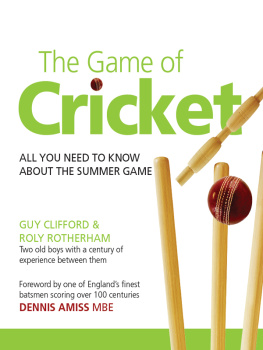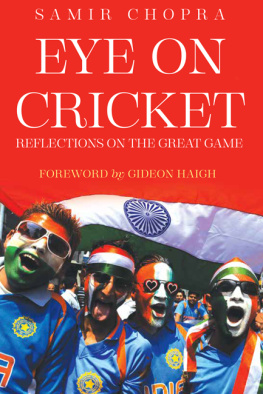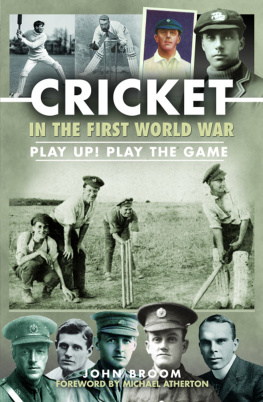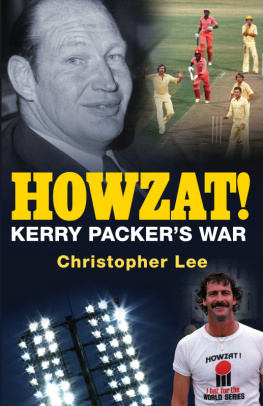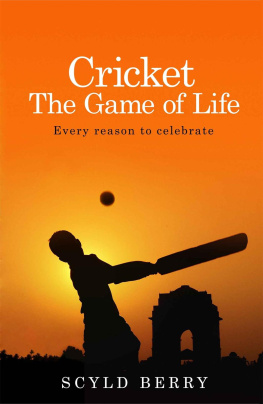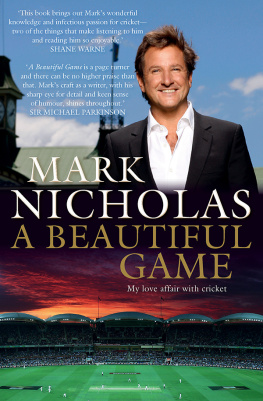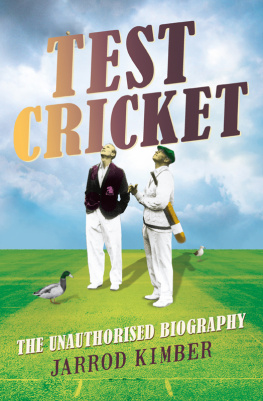Nobody has given more thought to THINK Cricket than the indefatigable Chris Bazalgette. But he is of course more than just a great thinker; he is also a great doer who sets an example to those who love the game. This lovely and important volume is crammed full of his experiences from a career that has graced the world of club cricket for more decades than I care to remember. It is perceptive and understanding.
Chris and John know that cricket is a hard game in which there are a multitude of twists and turns, and yet in this book they have produced a mini-bible into which players of all ages and abilities can dip, in the secure knowledge that their skills will thereby improve. It is a straightforward book too, where there is something for everybody: batting, bowling and fielding tips, and a few words on captaincy, umpiring and scoring as well. This is definitely a book to be slipped into the cricket bag as an essential piece of equipment, alongside bat, pads, gloves and box. We all like to have something in life on which to hang our hats and these pages should do the trick for most of us.
Many people reveal their secrets of success grudgingly, but not so with Chris and John. They have written a book here that is bang up to date, but yet never fails to appreciate the experience taught by history and times past. Gamesmanship plays no part in their scheme of things and the game for them is infinitely more important than the individual.
This book is full of advice which will improve your game and, who knows, might work wonders for your technique and also do much for your morale. There is always so much to learn about cricket and so much to investigate. Read this book and youll improve.
J. R. T. Barclay
Director of Cricket and Coaching, Arundel Castle Cricket Foundation.
MCC President 2010
Manager, England Tour of Zimbabwe and New Zealand 1996-97
Assistant Manager, England Tour of South Africa and the World Cup in India 1995-96. Captain of Sussex 1981-1986
Preface
The majesty of the game of cricket is that it is not just a physical activity. It is not simply a matter of how strong or tough one is, or how fast one can run, but a combination of the mental and physical strengths and abilities needed to outwit your opposition.
THINK Cricket stresses that there is much more to the game when your mind is fully focused. It aims to open everyones mind to a wider dimension of the game, and to provide a subtle awareness which should mean better results.
Many cricketers, even those participating every week, do so without realising how their performance can be improved dramatically.
THINK Cricket is for amateur cricketers who lack the resources to look at videos of those who are going to oppose them, as do professional cricketers, and have no professional coach to remind them of what to look for in each game they play.
However, everything discussed in this book should be equally valuable at whatever level you are playing, but it is the amateur or club cricketer who has the most to gain.
Apart from such cricketers in the Test Match playing countries that are full members of ICC, those in the ever-increasing number of associate and affiliate member countries will benefit from reading this book.
Both authors have been associated with and have played in many of the above-mentioned countries and throughout the world. We have personal experience of the immense enthusiasm to be found. There is plenty of thought-provoking advice within these chapters.
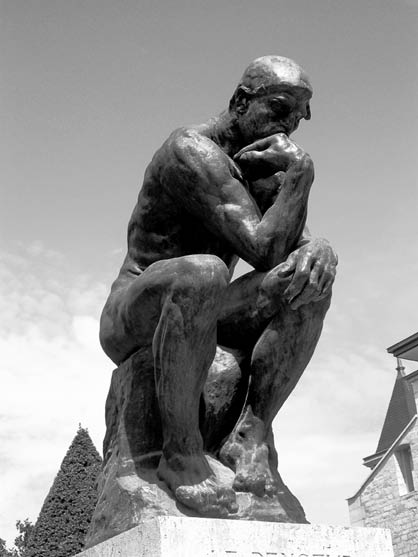
*The Thinker by Rodin located at the Muse Rodin in Paris.
Note: Cricket is a game for women and girls as well as men and boys. The use of pronouns indicating the male gender is purely for brevity.
Scope and Organisation
Our content is divided into chapters along the lines of cricket itself: Captaincy, batting, bowling, fielding, wicket-keeping, umpiring and scoring, and psychology. All are presented in detail from the thinking angle.
It will be appreciated how much the Captain has to do and especially if the reader is in the hot seat, the importance of leadership will be fully perceived.
Once the reader has found a particular factor works, then the true value of the book will mean so much more. The batting and bowling chapters should be enjoyed particularly, and there the true impact of the mental approach will be absorbed. Increasing the mental input will lead to the realisation that new levels of performance are attainable.
As the most important member of the team is the Captain, first we focus on his thinking process, his responsibilities before and after the match and, of course, his leadership on the field of play.
We emphasise that a batsman should mentally prepare for an innings; he should not just reach the crease and play the ball without thought. He should be reading the bowler, looking around the field for scoring opportunities and asking himself if a tempting gap has been left open as a trap? It is seldom there because there are not enough fielders!
We discuss the mental approach of the fast bowler, his opening spell, his body language and, when rested, his attitude to bowling again later in the innings. Following on we introduce the slow bowler with variations of guile, flight and spin all demanding concentration. The bowler has to learn how to read a batsman, search for his weakness and set a trap that causes him to self-destruct.
Fielding, whether close to the bat or in the outfield demands a lot of thought and concentration. The fielder should be thinking about how he can support the bowler and his team-mates, and he will find he is more in the game, thus considerably enriching this activity.
The wicket-keeper has to concentrate every time the ball is bowled and, besides the physical activity, cannot relax. He must observe and provide a detailed assessment of each batsman for each bowler, and for his Captain whenever asked.
Each match, whether limited overs or a time game requires thought from all the participants. The more professional the team the more scientific will be their approach. Pre-match preparation will include a team talk and a plan for selective attacks on the opposition, both in the field and with the bat. The Captain will explain his strategy, the team will collectively .Absorb this book and realise how much the brain can assist in gaining the best from the game. Every ball requires mental input, apply it and one is able to enjoy cricket so much more.
Overview Of Chapters
THINK Success
THINK Success should be the aim for everyone starting his or her life. However, in this context we are thinking of batting and bowling. Taking batting first, if you followed these instructions and achieved each activity well you would eventually become a very good batsman.
Similarly, if you followed the process for bowling you would become a very good bowler.
Even if you were to accomplish the tasks set for both challenges and asked the professionals for their advice and followed it, you should be a good exponent of batting and/or bowling. The only other factor you require is luck.
THINK Captaincy
The Captain has a wide range of responsibilities to both his team and his club. This chapter is divided into sections describing each area specifically. As a club Captain he has more duties than leading his team during a match. These are all highlighted in this chapter. Even more important is his ability to handle people and his judgement in gaining the best from each player, thus moulding a team together.
THINK Batting
Although cricket is a team game, batting is each individuals responsibility and each team member should learn not only how to bat but also be able to perform. This chapter will help all batsmen to learn how to improve their performance even before reaching the middle, to outwit the bowlers and score runs more easily.


